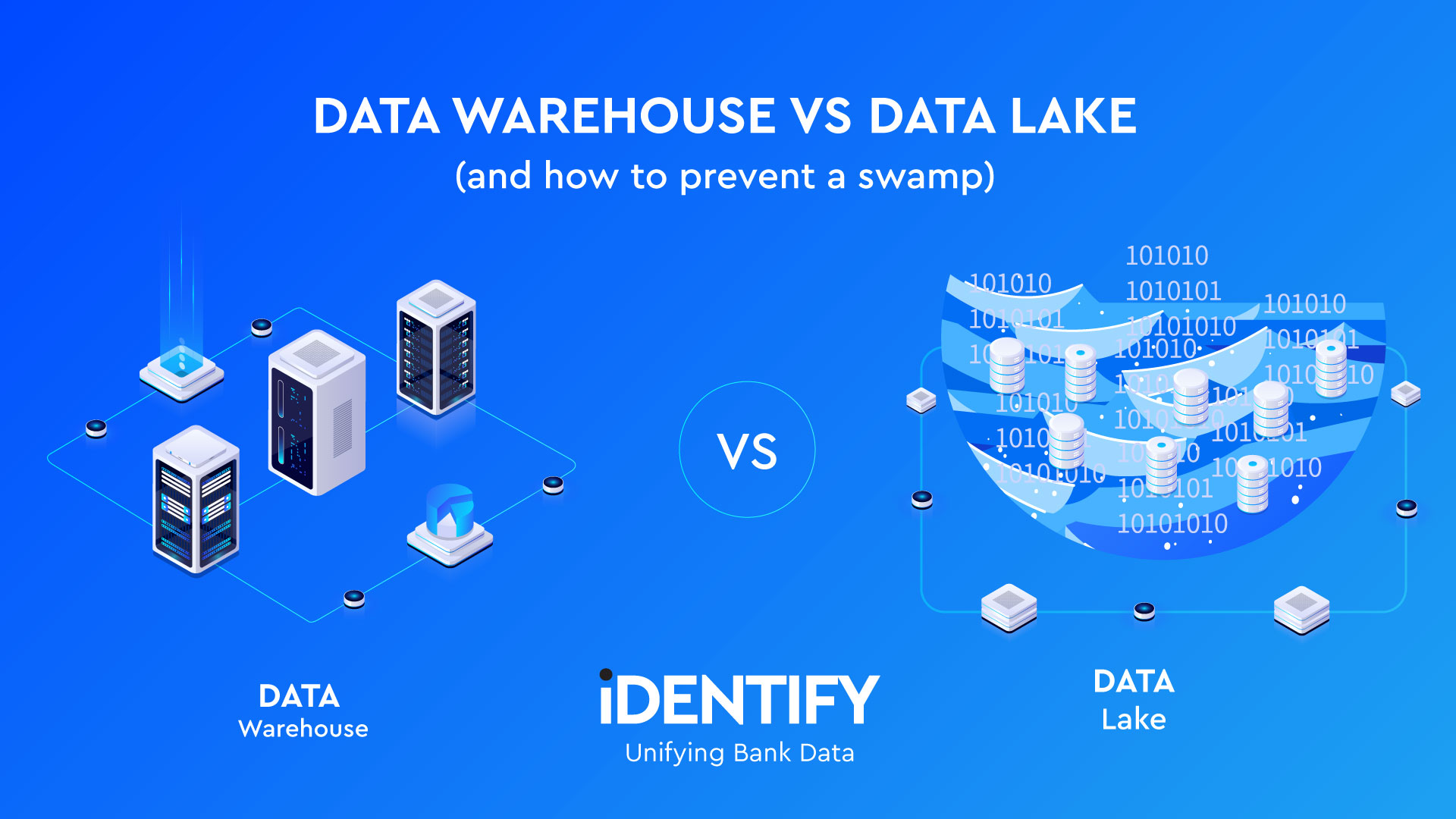
The problem banks have isn’t a lack of data. It’s everywhere, spread across multiple formats, stored in disconnected systems, and piling up faster than anyone can use it. The actual difficulty is that modern banking tools require quick and accurate data retrieval, and to do that you’ll need infrastructure.
Two common structures are a data warehouse and a data lake. Both can be powerful for bank data modernization, but if you’re not careful, you can end up with something far less useful: a data swamp.
So what’s the difference, and which structure is right for your bank? Let’s walk through each, then I’ll share why Snowflake for banks is often the most flexible and future-ready choice.
What Is a Data Warehouse?
Think of Amazon’s massive distribution centers. You place an order, and chances are that item is already in a nearby facility. Everything is barcoded, organized, and tracked so it can be pulled quickly and shipped out.
That’s what a data warehouse does for your bank’s information. At iDENTIFY, we help community banks and credit unions set up the “shelves” for their data, with retrieval mechanisms in place so information is easier and faster to access.
A bank data warehouse might store:
- Standardized transaction history
- Clean customer records
- Summarized loan performance reports
- Aggregated account balances
- Regulatory compliance metrics
The advantage of a warehouse is structure, everything is organized so you can get exactly what you need, when you need it.
What Is a Data Lake?
Sometimes, a warehouse requires more upfront organization than a project calls for. That’s where a data lake comes in.
Most people in banking have heard the term, but the definition can vary. A data lake is a large, central storage environment where you can place all your data, structured or unstructured, before deciding how to organize, process, and analyze it.
If a warehouse is Amazon’s shelving system, a lake is like having a huge body of water full of many kinds of fish. You can catch what you need, but you’ll need the right gear for each kind. Some fish require a boat, others can be caught from the dock, and some are hard to find.
For community banks or credit unions, a data lake might hold:
- Transaction logs
- Customer profile updates
- Loan applications
- Mobile app activity
- Call center recordings
- Marketing campaign results
The flexibility is great, but without governance, a clean lake can quickly turn into a swamp.

How a Lake Becomes a Swamp
A couple of our clients have said, “We have a data swamp.” When we ask why, the answer is almost always,
“We’ve just thrown everything in there, and we know it’s not clean.”
Here’s how swamps happen:
- Teams pull data into personal spreadsheets, manipulate it manually, and use their own versions for reporting.
- When someone new takes over the role, they don’t know the old logic and start fresh, creating duplicate processes.
- Over years or decades, thousands of reports pile up, no one knows the source of truth, and accuracy becomes questionable.
Banks have good intentions and strong use cases for their data. But when you’re tied to a large core provider that’s slow to innovate, technical debt builds up and your data quality suffers.
Why I Recommend Snowflake for Banks
Snowflake and similar platforms like Databricks aren’t just cloud storage providers. They are modern orchestration tools for manipulating data at scale. Snowflake and Databricks, now even AWS and Azure, all have features of connecting your data. This is beyond an API. I think banks are still moving in the cloud, they might still be asking, “should we look in the API?” And, by the time you get there, they're going to be outdated.
That’s why tools like Snowflake are useful. They don’t lock you into one structure. For community banks, that means you don’t have to choose between a data lake and a data warehouse and commit to it forever.
For community banks, Snowflake offers something important:
- You can have both a warehouse and a lake in the same environment.
- You can store raw data for exploration and also maintain clean, structured data for reporting.
- You can connect everything securely, at speed, and scale as you grow.
With Snowflake for banking, you can modernize your data infrastructure without locking yourself into a single rigid model.
Data Infrastructure Helps Manage Regulatory Compliance
Yes data infrastructure is what’s needed for modern banking tools and other business opportunities, but it’s also about staying compliant with regulations.
We’re finally starting to see some clarity around what regulators really want. Over the last few years, there were a lot of what I’d call blind requests, things like, “Just show me how you did that,” without much guidance on why. Now, the expectations are more defined.
In recent years, regulators have provided more clarity about what they expect:
- A clear plan for how the system is managed
- Documented ownership, whether through internal teams or external partners
- Monitoring metrics like uptime, process runtimes, and data validation results
When we work with banks during exams and audits (especially around their data warehouse or data lake) it often comes down to showing that there’s a clear plan for managing the system. That could mean hiring internal data analysts or database engineers, or bringing in external resources to fill those roles. Regulators want to see how you’re supporting it and how you’re managing it.
Part of that is having health monitoring in place. What’s the uptime? How long does it take to run processes? These are simple things to track, but you need to know regulators may ask for them, and you need to be ready to show them.
Escaping the Technical Debt Swamp
If your reporting still runs on Cognos BI, SSIS, or SSRS, you’re carrying hidden costs and risks that will surface when you try to move to the cloud. We’ve seen banks with thousands of SSIS jobs keeping old reports alive, jobs that will all need to be rebuilt, replaced, or retired once on-prem infrastructure is gone.
At iDENTIFY, we help community banks untangle decades of technical debt and migrate to a single, unified data platform powered by Snowflake. That means we:
- Untangle decades of technical debt
- Migrate to a unified, governed Snowflake banking environment
- Eliminate fragile, one-off integrations
- Consolidate multiple “sources of truth” into a single trusted platform
The Bottom Line
Whether you choose a data warehouse, a data lake, or a hybrid approach, the real goal is the same: a clean, well-governed environment that prevents a swamp.
That’s how you:
- Access accurate data instantly
- Pass audits with confidence
- Unlock the full value of your bank’s data for strategy, customer service, and growth
The structure matters, the governance matters, and the sooner you start building both, the less likely you are to get stuck in the muck.
Learn more about data engineering services and talk to our team today.









